Which crypto and AI projects will take the lead in the x402 payment protocol?
Author: Deep Tide TechFlow
Original Title: Google and Visa Are Both Laying Out Plans—What Investment Opportunities Are Hidden in the Undervalued x402 Protocol?
If you've been following crypto social media lately, you may have noticed a new and unfamiliar term popping up frequently: x402.
However, most of the discussion is happening on English-language crypto Twitter, while the Chinese community remains relatively quiet. This kind of information gap often signals new narratives and opportunities.
The story starts with Coinbase.
At the end of September, Coinbase announced the establishment of a foundation called x402 in partnership with Cloudflare. The market reaction at the time was lukewarm, as Coinbase often releases various protocols and tools.
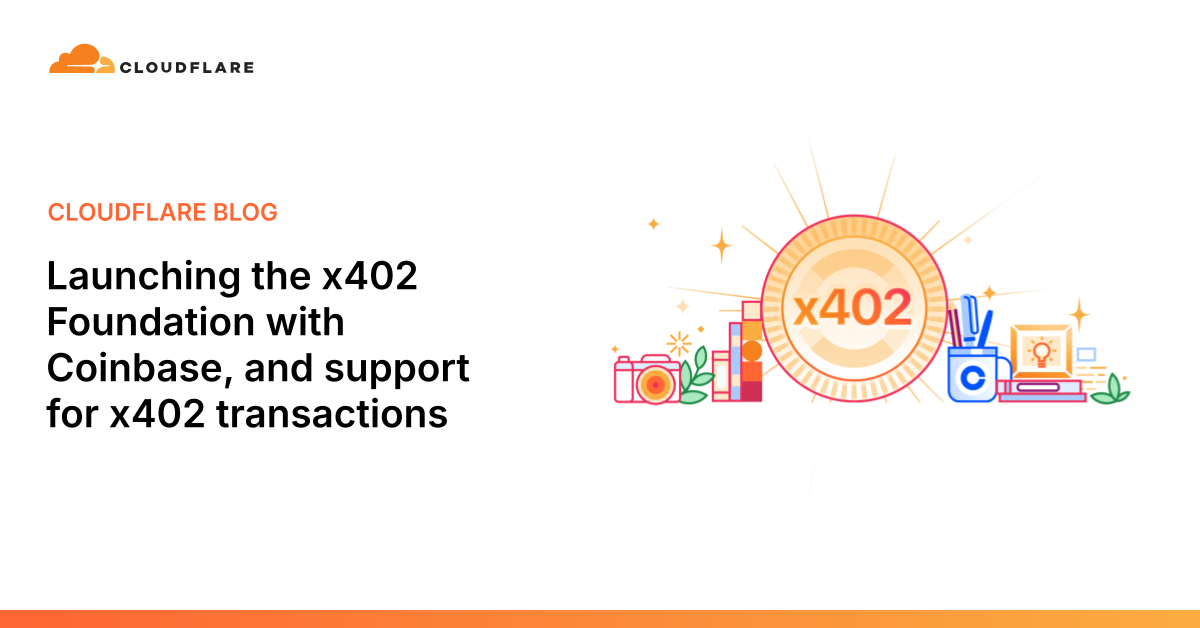
If you're not familiar with Cloudflare, a simple explanation is that this company controls the traffic entry point for over 20% of websites worldwide and is a core player in internet infrastructure.
It rarely gets involved in the crypto space, let alone co-developing protocols with crypto companies.
In mid-October, Visa also announced support for the x402 standard. As the world's largest payment network, Visa's decision to support a standard proposed by Coinbase was interpreted by the market as a bullish signal and a step toward greater mass adoption.
From Cloudflare to Visa, from internet infrastructure to traditional payment networks, this x402 protocol led by Coinbase seems to be bridging two worlds.
Looking through the early participant list of x402, this feeling becomes even stronger. Tech giants like Google, AWS, and Anthropic (the parent company of Claude AI) are all involved. Even more noteworthy is that a large number of AI-related projects have begun announcing x402 integration, including several AI agent platforms.
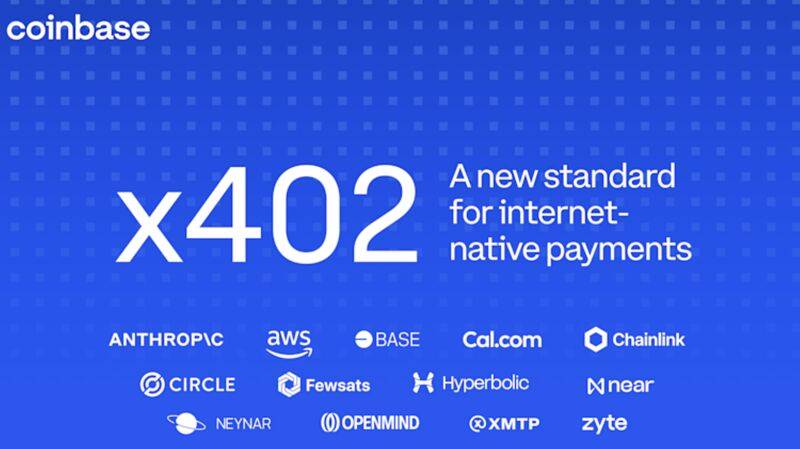
So, essentially, Coinbase has developed a payment protocol, and traditional payment giants and tech companies are joining in, while AI projects are flocking to integrate it.
Is the market brewing a new narrative? If so, who will be the biggest beneficiaries?
HTTP 402: The Internet's Unfulfilled Payment Dream
To understand why x402 is important, you first need to know a little-known fact: the internet protocol has always had a "payment" function, but it has never been activated.
In 1997, when the HTTP/1.1 standard was established, engineers defined a variety of status codes to correspond to possible situations or functions on the internet.
For example, the well-known 404 is often used to indicate "page not found," while 200 means "request successful," even if you don't see it.

As for 402, early engineers defined it as "Payment Required."
But 402 has never been officially used and has always been reserved. The reason is simple: there was no suitable payment method for the internet at the time.
Use credit cards? That would require complex merchant systems to interface with the internet. Use PayPal? That would also require a corresponding account system to be set up.
So the internet took another path—an advertising model. The rise of Google and Facebook was essentially due to the lack of native payment capabilities on the internet.
Over the past 30 years, there have been attempts to activate 402, but each time they failed due to technical limitations. Until now, as crypto payments are gradually being accepted, the conditions seem to be maturing:
First, there are native stablecoins on public blockchains, such as USDC, which theoretically can make payments as simple as sending an email. Second, L2s are reducing transaction costs. On Base or Polygon, a transaction costs only a few cents.
Finally, and most crucially, the explosion of AI has led to a surge in agents, potentially creating real demand for using the internet for payments.
For example, if I want my AI assistant to call another AI's translation service for a fee of $0.01, this transaction would be impossible in the traditional payment system, or would require mobilizing more resources and opening more channels.
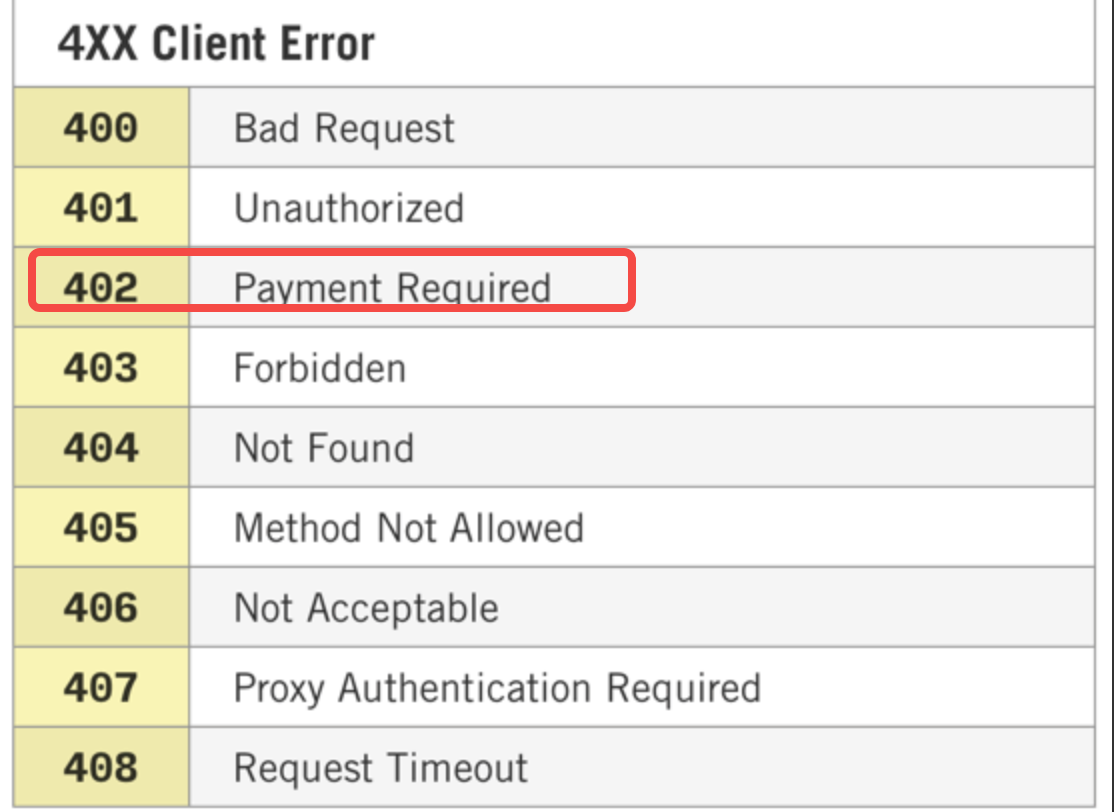
This is where x402 comes in. Based on the HTTP 402 standard, Coinbase has developed a complete payment protocol. It's not reinventing the wheel, but rather trying to fulfill the potential of the 402 status code.
With the x402 protocol, when an AI accesses a paid API, it will receive a 402 status code and a payment request, then automatically complete the payment with USDC—no human intervention required.
This may also explain why Cloudflare and Visa are participating.
What they see is not just the crypto protocol itself, but the opportunity to reconstruct the internet's payment layer. When payments become as simple as HTTP requests, the entire internet business model could change.
The API economy, content monetization, and AI service markets could all explode thanks to x402. The companies and projects that move first will gain a huge first-mover advantage.
x402: Enabling Payments with Crypto
The technology behind x402 may sound complex, but its core logic is simple. Understanding how it works reveals the investment opportunities behind it.
Let's look at how a typical x402 transaction is completed.
-
When a user or AI accesses a paid resource, the server returns a 402 status code and tells you: this service costs 0.1 USDC, please pay to this address.
-
The client sees this and automatically initiates a USDC transfer.
-
The server confirms receipt of payment and immediately provides the service.
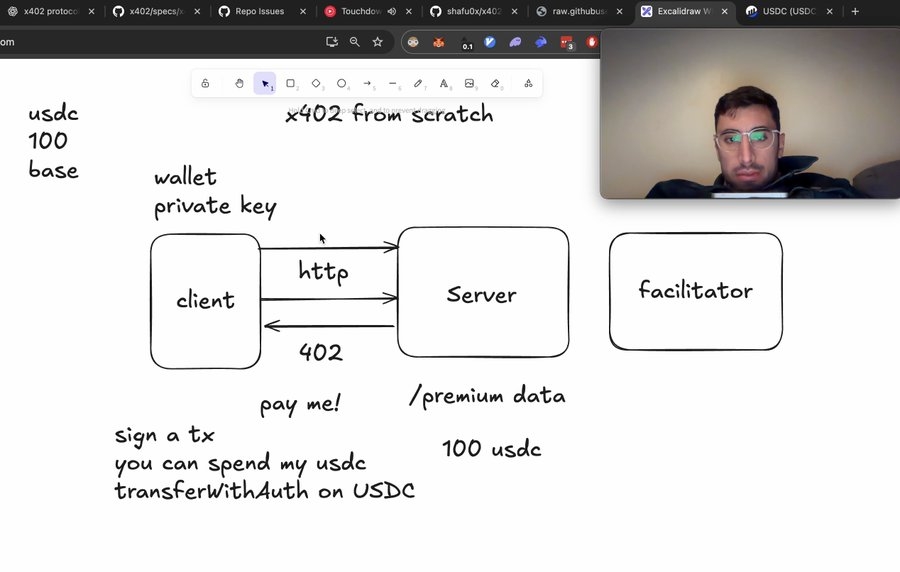
How is this different from traditional payments?
Traditional payment gateways require you to register an account, link a bank card, and go through various verifications. Each transaction must pass through banks, card organizations, payment companies, and other intermediaries, and settlement takes at least T+1. Fees are usually 2-3%, plus various hidden costs.
x402 is completely different. There is no account system, no registration required—anyone with a wallet, including AIs, can pay directly. Payment is settlement; the recipient gets the money within seconds (depending on the chain used). Most importantly, there are zero protocol-level fees.
You might ask: How do they make money with zero fees?
This is where x402 benefits the crypto ecosystem, or more specifically, Coinbase.
The x402 protocol itself is free, but platforms using the protocol can charge fees. For example, Coinbase, as a payment service provider, can charge a small service fee. The Base chain processes transactions and charges a minimal gas fee. This model allows the entire ecosystem to profit, rather than being monopolized by a single platform.
Cross-chain compatibility is another highlight. x402 does not restrict which chain to use—Base, Polygon, Solana, all are supported. This means users can choose the cheapest and fastest chain for payment depending on the situation.
In the x402 envisioned system, AIs are no longer just tools, but economic entities with payment capabilities. They can purchase computing power, data, and services from other AIs, forming a brand new agent economy.
In fact, the technical details are less important than what these features mean: lower costs, faster speeds, and a bigger market. When payment friction approaches zero, previously impossible business models become viable.
This may be why not only crypto companies, but even traditional giants like Visa, want to get involved.
Which Projects Are Worth Watching?
For us, x402 represents not only a technological update but also potential investment opportunities. The list of x402 participants may be the best indicator of the protocol's prospects.
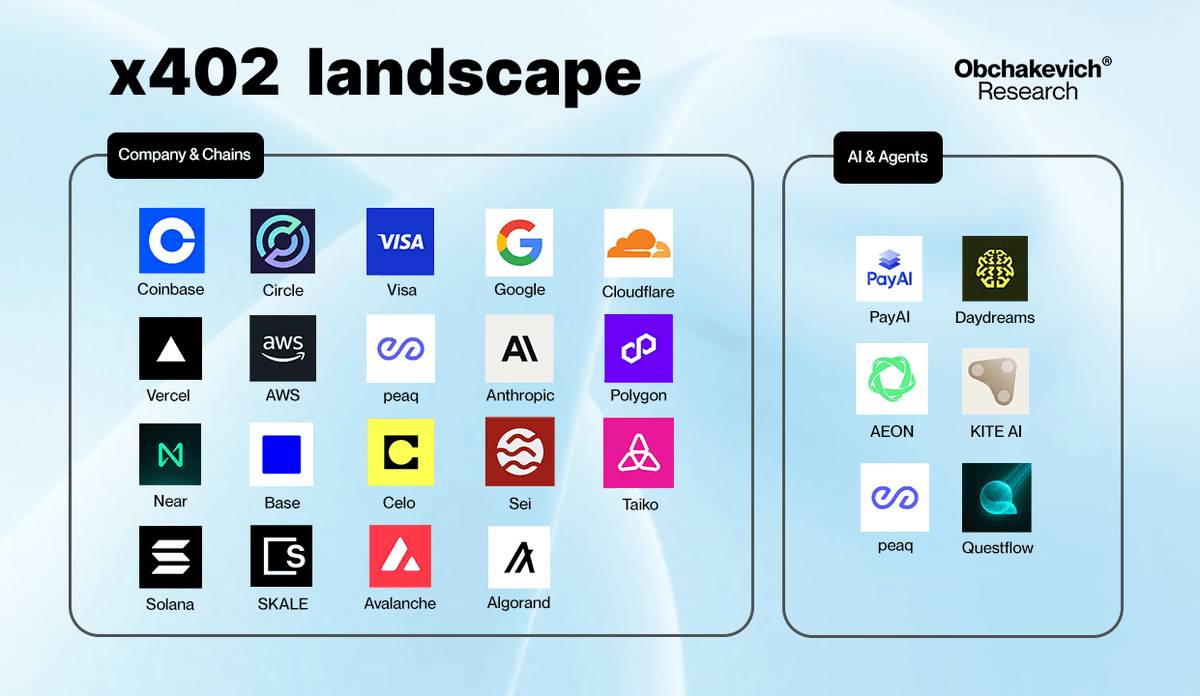
Let's first look at the three giants at the infrastructure layer.
Coinbase (stock symbol: COIN) is the initiator, with the most direct motivation.
As the largest crypto exchange in the US, it has always been seeking revenue sources beyond trading. x402 allows Coinbase to transform from an exchange into a payment infrastructure provider. Every x402 transaction may go through the Base chain, and every USDC payment strengthens its ecosystem.
If x402 really takes off, Coinbase will become the Visa of crypto payments.
Cloudflare (stock symbol: NET) has its own considerations for joining.
This company controls 20% of global website traffic but rarely gets involved in finance. Why now? The answer may lie in AI.
Cloudflare recently launched the Workers AI platform. If websites can charge AIs directly via x402, Cloudflare will control a huge AI services market.
Visa (stock symbol: V) is more of an offensive and defensive business strategy.
Defensively, it's to avoid its payment network being marginalized by crypto payments; offensively, it's to seize the initiative in AI payments. Visa itself previously launched a protocol called TAP, which is now interoperable with x402.
Specifically, TAP (Trusted Agent Protocol) is a payment protocol designed for AI agents. In the future, AIs can use both the traditional Visa network and crypto payments. An AI assistant can buy plane tickets with your credit card or use USDC to purchase services from another AI.
Now let's look at crypto projects, where the investment opportunities are most concentrated.
1. @AEON_Community AEON
AEON has launched AI Payment infrastructure, enabling AI agents to autonomously search, shop, and pay with cryptocurrencies. It collaborates with major blockchains like BNB Chain, Solana, TON, and TRON, and won the BNB Chain Demo Day championship.
2. @PayAINetwork PayAI Network
PayAI Network has built a global, always-online marketplace where AI agents can hire and work with each other, based on open-source technologies like libp2p, IPFS, ElizaOS, and Solana. Recently, two ElizaOS agents completed the first fully autonomous contract negotiation, signing, delivery, and payment in history.
After supporting x402, AI agents can charge on demand, truly enabling commercialization.
3. @daydreamsagents Daydreams
An AI framework with composable context, designed for executing on-chain tasks, allowing AI services to transact via micropayments.
4. @GoKiteAI KITE AI
KITE AI is building infrastructure for the agent internet—a system that enables autonomous agents to independently authenticate, transact, and operate in real-world environments.
In September this year, KITE raised $18 million in Series A funding, co-led by General Catalyst and PayPal Ventures. Their AIR (Agent Identity Resolution) system provides verifiable identity and programmable payment channels for AI agents.
5. @questflow Questflow
Questflow is the orchestration layer for the multi-AI agent economy, coordinating global AI agents to autonomously execute tasks and earn rewards on-chain. After integrating the CDP wallet and x402, Questflow has processed over 130,000 autonomous microtransactions and integrated more than 30 third-party agents. They have partnered with Circle, using USDC as the core settlement currency.
6. @peaq Peaq
Peaq has announced support for the x402 protocol, enabling builders on its chain to use x402 for machine-to-machine (M2M) and agent-to-agent (A2A) payments. As a Layer-1 blockchain designed specifically for DePIN (Decentralized Physical Infrastructure Networks), Peaq has already connected over 850,000 machines, robots, and devices, and is frequently mentioned in the robotics x crypto narrative.
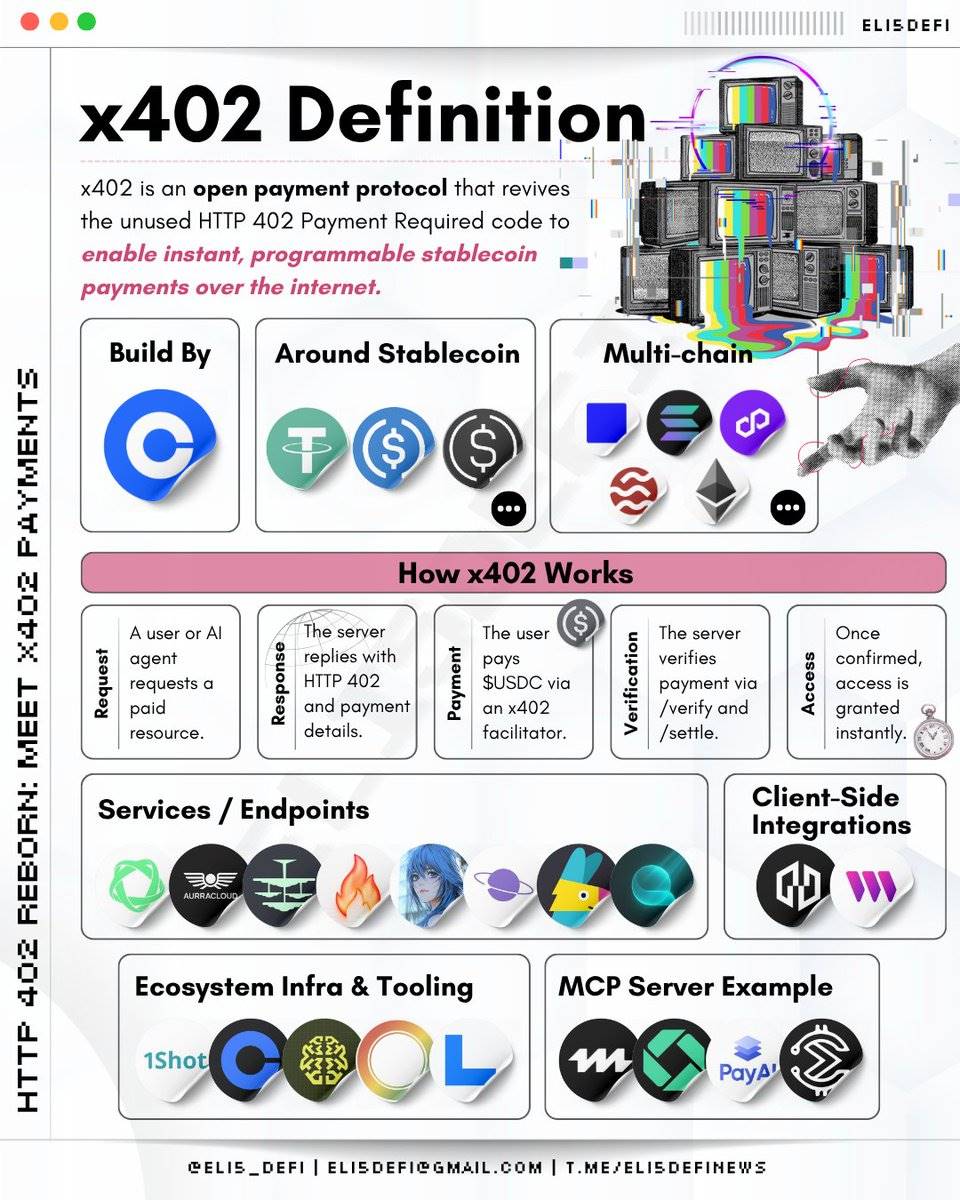
There are also some projects that haven't issued tokens yet but are worth close attention. For example, Firecrawl provides web data scraping APIs and plans to charge per use via x402. Pinata, the largest IPFS service provider, plans to enable x402 payments for storage services. Once these projects issue tokens, they could become new hotspots for the x402 concept.
Due to space limitations, not all potentially benefiting projects are listed here. You can click to view the full project list compiled by another well-known science popularizer, @eli5_defi.
Overall, if you want to bet on this narrative, at least three clear investment themes can be seen from the protocol's participants:
First, infrastructure beneficiaries, with Coinbase leading the way.
Second, the AI agent track, especially projects that have already announced integration.
Third, the Base ecosystem, which has already become the main battleground for x402.
Finally, for investors following this narrative, you need to know that x402 is not the only solution.
The L402 protocol of the Lightning Network is also trying to activate HTTP 402, but based on bitcoin rather than stablecoins. Google's AP2 protocol, while supporting x402, is also developing its own payment standard.
If large tech companies decide to launch their own payment protocols, x402 may face fierce competition.
However, 402 has two key advantages: first-mover and ecosystem. The combination of Coinbase, Cloudflare, and Visa, plus dozens of AI projects as early adopters, has already created an initial network effect.
For investors, the x402 concept provides a clear narrative theme: payment infrastructure for the AI era.
Whether you bet on infrastructure (Coinbase, Base ecosystem) or the application layer (various AI agent projects), the core logic is the same: betting on the imagination space of the new AI economy.
If you believe AI agents are the future, then their payment needs are a necessity. And x402 may be the best crypto answer to those needs right now.
Disclaimer: The content of this article solely reflects the author's opinion and does not represent the platform in any capacity. This article is not intended to serve as a reference for making investment decisions.
You may also like
XRP sinks below $2 despite $1B in ETF inflows: How low can price go?

Beyond Trading: A Look at Star New Projects and Major Updates in the Solana Ecosystem
The Solana Breakpoint 2025 conference was truly spectacular.

Quick Look at the 33 Winning Projects of the Solana Breakpoint 2025 Hackathon
Over 9,000 participants formed teams and submitted 1,576 projects, with a total of 33 projects winning awards. All of them are top industry seed projects selected from hundreds.
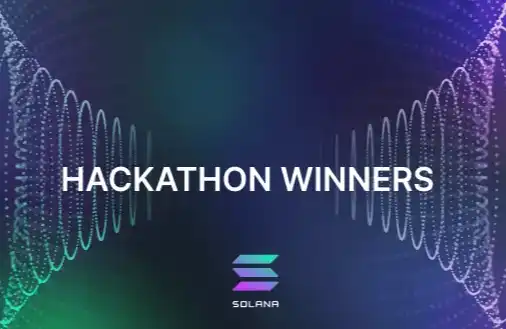
WEEX Labs: The Next Chapter for Memecoin, the Era of Flash Trends
In the era of rapid trends, memecoins have begun to shift from being a "joke" to becoming a "cultural index."

